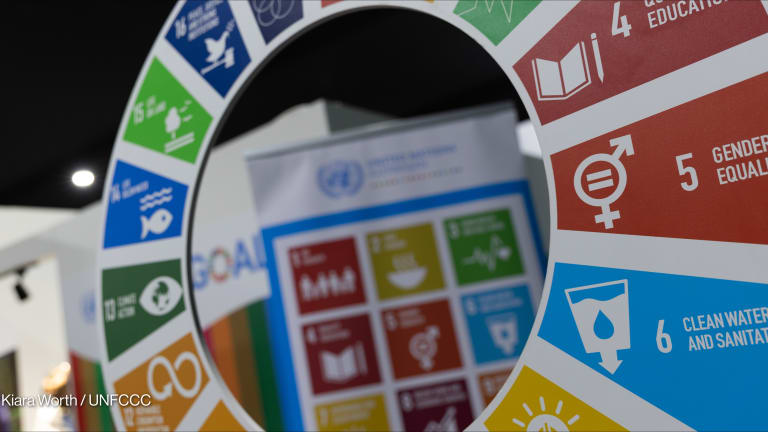
The COVID-19 pandemic has sped up the digital transformation of small and medium enterprises, or SMEs. Lockdowns and social distancing measures led companies of all sizes and sectors to rethink their business models.
But a number of challenges — from access to broadband to access to credit — have prevented many SMEs in sub-Saharan Africa from making this transition, experts said Tuesday at Devex’s Future of Development Finance event.
The Pro read:
How can Africa's agriculture SMEs get more funding, policy support?
While small- and medium-sized enterprises play a key role in connecting smallholder farmers to markets where products can be sold, the funding and policy environment across the continent hinders the success of these companies.
Digitalization is transforming sectors ranging from logistics to health care to education across different markets, said Adam Hadidi, co-founder and managing director of BluePeak Private Capital, which has a presence in Tunis, Nairobi, Lagos, and London. It recently raised $115 million for a fund for African SMEs with a cap of $250 million.
“The ability to leverage technology opens up all sorts of different growth opportunities,” he said. But SMEs still have a hard time financing that growth, Hadidi added. He called for more collaboration between the public and private sector to invest in these businesses.
After the COVID-19 pandemic forced shops in Ethiopia and around the world to close, the financial technology company Kifiya supported SMEs to access digital markets and financial services.
That included training 10,000 micro and small enterprises on Kifiya’s e-commerce platform.
But there were a range of challenges ranging from smartphone affordability to digital literacy, said Cydney Ross, who was previously the head of programs and strategy at Kifiya.
Even when these business owners, the majority of them women, were able to reach new customers on the online marketplace, they didn’t have access to credit — and that constrained their growth.
“They didn’t have the working capital they needed to keep inventory in stock to meet growing demand,” Ross said of the business owners.
The Pro read:
Q&A: Finland's new focus on digitalization in development
Will Finland meet its aid spending commitment? What does its new focus on digitization mean? Devex sits down with Ville Skinnari, Finland’s minister for development cooperation and foreign trade, to find out.
In response, Kifiya developed a digital lending platform that used alternative credit scoring, with algorithms drawing on data including social media activity, to assess credit worthiness. The company determined that the working capital gap for most of these micro enterprises in Ethiopia is $300, Ross said, calling it a relatively small amount of money considering its potential impact.
But even when a lender can assess creditworthiness, most local financial institutions do not have the technology or resources to manage so many small loans.
So Kifiya worked with a local financial institution to offer smaller lines of credit to micro SMEs, and Ross highlighted this as an opportunity for more attention and investment.
Forty percent of small businesses fail due to a lack of funding and business expertise, said Kwasi Donkor, chief strategy officer at the U.S. African Development Foundation. As digitization “opens up so many avenues for SMEs to reach their customers in previously unimaginable ways,” USADF is considering not only how to provide businesses with access to finance, but also other forms of support, he said.
Donkor cited examples from USADF’s portfolio, including ImpactHER, a nonprofit organization supporting female entrepreneurs in Nigeria. The organization is providing training to 500 women-led businesses that do not have an online presence, “helping them to become more digitally savvy in this post-COVID environment,” he said.
USADF is seeking more opportunities to not only invest directly in SMEs, but also help SMEs digitize their operations, make more data driven decisions, and acquire new customers online.








